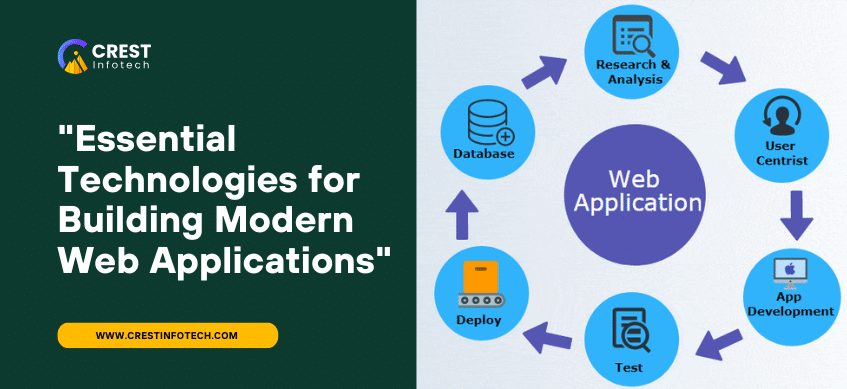Introduction
The rapid evolution of web technologies has transformed how applications are built, making them faster, more scalable, and highly interactive. Developing a modern web application requires a combination of frontend, backend, databases, and cloud technologies to ensure a seamless user experience. This article explores the essential technologies that power modern web applications.
1. Frontend Technologies
Frontend development focuses on creating the user interface (UI) and experience (UX) of a web application.
🔹 HTML, CSS, and JavaScript
These are the core building blocks of any web application:
- HTML structures the web page.
- CSS enhances design and responsiveness.
- JavaScript adds interactivity and dynamic behavior.
🔹 Frontend Frameworks & Libraries
To streamline development, modern web apps use frameworks and libraries such as:
- React.js – A JavaScript library for building highly responsive UIs.
- Angular – A TypeScript-based framework developed by Google for scalable applications.
- Vue.js – A lightweight framework that offers flexibility and simplicity.
2. Backend Technologies
The backend manages the logic, database operations, and server-side processing of a web application.
🔹 Programming Languages & Frameworks
Popular backend technologies include:
- Node.js (with Express.js) – A JavaScript runtime for fast, scalable backend applications.
- Django (Python) – A high-level Python framework for secure and rapid development.
- Spring Boot (Java) – A robust framework for enterprise-level applications.
🔹 APIs & Microservices
Modern web apps rely on RESTful APIs or GraphQL to communicate between the frontend and backend. Microservices architecture is also widely used to improve scalability and maintainability.
3. Databases & Storage
Choosing the right database is crucial for performance and scalability.
🔹 Relational Databases (SQL)
Structured databases used for complex data relationships, including:
- MySQL – Open-source and widely used.
- PostgreSQL – Advanced features with high reliability.
🔹 NoSQL Databases
For handling large-scale, flexible data storage:
- MongoDB – Document-based database ideal for dynamic applications.
- Firebase Firestore – A cloud-based NoSQL database by Google.
4. Cloud Computing & DevOps
Modern web applications rely on cloud platforms for deployment, scalability, and security.
🔹 Cloud Platforms
- AWS (Amazon Web Services) – Offers scalable infrastructure and services.
- Google Cloud Platform (GCP) – Provides cloud computing and machine learning tools.
- Microsoft Azure – Enterprise-level cloud solutions.
🔹 DevOps Tools
- Docker & Kubernetes – Used for containerization and efficient deployment.
- CI/CD Pipelines (Jenkins, GitHub Actions) – Automates testing and deployment.
5. Security & Performance Optimization
To ensure secure and efficient web applications, the following technologies are used:
- Authentication & Authorization – OAuth, JWT, Firebase Authentication.
- Caching – Redis, Memcached for faster load times.
- Content Delivery Network (CDN) – Cloudflare, AWS CloudFront to optimize content delivery.
Conclusion
Building modern web applications requires integrating multiple technologies for an optimal user experience. From frontend frameworks like React.js to backend solutions like Node.js and Django, and cloud services for deployment, selecting the right stack is crucial for creating scalable, secure, and high-performance applications. As technology evolves, staying updated with the latest trends ensures a competitive edge in web development.



